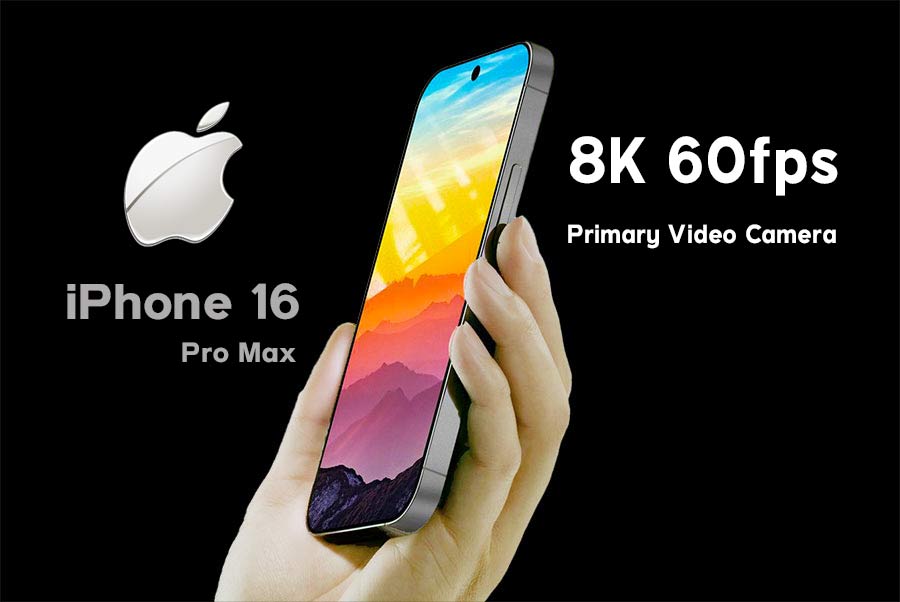Samsung jumped over iPhone 15 Pro Max in many ways. New AI feature and super camera improvement made Samsung S24 Ultra very iconic. Now it’s the time for apple to go with iPhone 16 series. It was confirmed by many sources that iPhone 16 series will have AI assistant and 8K 60fps primary video camera.
Although the 2023 iPhone 15 and iPhone 15 Pro models have just been released by Apple, insiders and analysts are already speculating about the upcoming 2024 iPhone 16 lineup. It is anticipated that the iPhone 16 lineup will introduce significant changes, including an increase in size for the iPhone 16 Pro to 6.3 inches and the iPhone 16 Pro Max to 6.9 inches, which will be the first size upgrade in years. However, these changes will only apply to the iPhone 16 Pro models, as the iPhone 16 models will remain the same size as the iPhone 15 models.
Apple is reportedly developing cutting-edge A-series chips for their upcoming iPhone 16 lineup, utilizing the advanced N3E 3-nanometer node. While details on potential performance enhancements are scarce at this time, it’s expected that these new chips will offer improved efficiency and speed. Furthermore, rumors suggest that the popular Action Button, previously exclusive to the iPhone 15 Pro models, will become available across all four iPhone 16 models in 2024. Additionally, there are whispers of a brand new “Capture Button” feature that will make taking photos and videos smoother and more intuitive than ever before.
According to early rumors, the iPhone 16 lineup may not see any major design changes, apart from a slight size update for the Pro models. However, it’s important to note that these are just rumors and Apple may still make adjustments to the design.
Apple has reportedly created three prototypes for the iPhone 16, each with its own unique features. All three designs have a vertically aligned camera, which could potentially allow for spatial video recording with the Vision Pro headset. One of the prototypes features a pill-shaped iPhone X-style camera, while the other two have dual lenses. Additionally, one of the designs has haptic buttons with a unified volume button, while the third includes standard mechanical volume buttons, an Action Button, and a new Capture Button. It’s worth noting that these prototypes are subject to change as Apple continues to refine the design.
We anticipate that Apple will choose the black phone design with a vertically aligned rear camera and a second “Capture” button on the right side for video capture. In the United States, the mmWave antenna will be located on the left side below the Action Button. These renders are based on information from an internal source who spoke to MacRumors and depict the standard iPhone 16 models. Apple has tested pink, yellow, and black colors for these models.
The iPhone 16 Pro and iPhone 16 Pro Max will have larger displays, according to multiple sources. The iPhone 16 Pro will have a 6.27-inch display, while the iPhone 16 Pro Max will have a 6.85-inch display. As a result, the dimensions of the iPhone’s body will increase, making both models taller and wider than their predecessors. The design and shape of the phones will remain unchanged, except for the addition of the new Capture Button.
Over the years, Apple has been known to follow a pattern of equipping their entry-level models with the previous year’s chip, while their Pro models get the latest-generation chip. For instance, the iPhone 15 and iPhone 15 Plus were equipped with the A16 Bionic chip, the same as the iPhone 14 Pro and iPhone 14 Pro Max. On the other hand, the iPhone 15 Pro and iPhone 15 Pro Max got the new A17 Pro chips.
If this pattern continues, then it is likely that the iPhone 16 and iPhone 16 Plus will come with the A17 Pro chip, while the iPhone 16 Pro and iPhone 16 Pro Max will be equipped with A18 chips. Apple’s Pu has hinted that this is the case, and that the A17 Pro chip may be less efficient than its predecessor. This means that iPhone 16 models that come with this chip may have a shorter battery life. However, this is because the next-generation chip will offer significant performance improvements at the expense of power efficiency.










